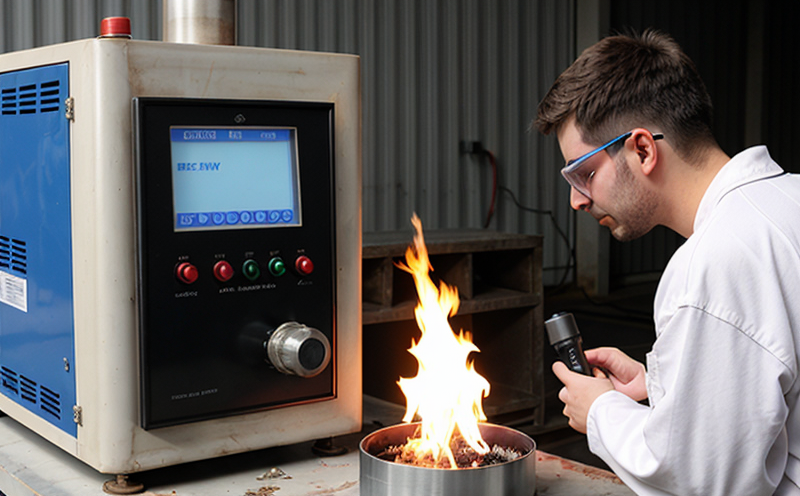DIN 4701-10 HVAC Thermal Load Verification
The DIN 4701-10 standard is an essential protocol used for verifying the thermal load performance of HVAC (Heating, Ventilation, and Air Conditioning) systems. This test ensures that HVAC equipment meets stringent design requirements and operational standards, thereby enhancing energy efficiency and reliability.
DIN 4701-10 is particularly relevant in sectors such as commercial buildings, industrial facilities, and residential complexes where the performance of HVAC systems directly impacts occupant comfort and overall building efficiency. The thermal load test verifies that the equipment can handle the heat and cold loads accurately, ensuring that it operates efficiently under a wide range of environmental conditions.
The testing process involves subjecting the HVAC system to controlled environments that simulate real-world operating conditions. This includes varying temperatures, humidity levels, and air flow rates. The goal is to ensure that the equipment can maintain optimal indoor climate conditions without exceeding its design limits.
During the test, detailed instrumentation measures key parameters such as temperature, humidity, airflow velocity, pressure differentials, and power consumption. These measurements are crucial for assessing the thermal performance of the system under various load conditions. The test setup typically includes a controlled chamber where the HVAC equipment is installed to ensure accurate results.
The DIN 4701-10 standard specifies detailed acceptance criteria that must be met for the HVAC system to pass the thermal load verification. These criteria include the maximum allowable deviation from design values, acceptable temperature and humidity ranges during operation, and energy efficiency metrics. Compliance with these standards ensures that the equipment is reliable and efficient in real-world applications.
The test results are typically documented in a comprehensive report that includes detailed measurements, graphs, and analysis of the system's performance. This report serves as evidence of compliance with DIN 4701-10 and can be used for quality assurance purposes, regulatory compliance, and internal documentation.
For R&D engineers, this service provides critical data to refine HVAC design parameters. For quality managers, it ensures that equipment meets the required standards before being deployed in commercial or residential settings. Compliance officers use these test results to verify adherence to industry regulations and codes. Procurement teams can leverage DIN 4701-10 verification reports to select high-quality HVAC systems.
The accuracy and reliability of DIN 4701-10 testing are paramount in ensuring that HVAC equipment operates efficiently under varying conditions. This is particularly important for buildings with large thermal loads, such as those located in extreme climates or those designed to house sensitive environments like data centers.
Industry Applications
| Industry Sector | Description of Application |
|---|---|
| Commercial Buildings | DIN 4701-10 testing is crucial for verifying the thermal performance of HVAC systems in large commercial buildings, ensuring energy efficiency and occupant comfort. |
| Industrial Facilities | This test ensures that industrial HVAC systems can handle high thermal loads efficiently, which is vital for maintaining optimal working conditions in manufacturing environments. |
| Residential Complexes | Testing verifies the performance of HVAC systems in residential complexes to ensure they meet energy efficiency standards and provide comfortable living environments. |
| Data Centers | DIN 4701-10 is used to verify that HVAC systems can maintain stable thermal conditions, which is critical for the operation of sensitive IT equipment in data centers. |
Environmental and Sustainability Contributions
DIN 4701-10 HVAC thermal load verification plays a significant role in promoting environmental sustainability by ensuring that HVAC systems operate efficiently. By verifying the thermal performance of these systems, we can reduce energy consumption and lower greenhouse gas emissions associated with heating and cooling operations.
The test helps identify potential inefficiencies in HVAC systems, allowing for timely maintenance and upgrades. This not only extends the lifespan of the equipment but also reduces waste and the environmental footprint. Compliance with DIN 4701-10 ensures that HVAC systems are designed and operated to minimize their ecological impact.
By implementing efficient HVAC systems verified through DIN 4701-10, organizations can contribute to broader sustainability goals such as reducing energy consumption, lowering carbon footprints, and promoting the use of renewable energy sources. This aligns with global initiatives aimed at combating climate change and fostering sustainable development.
The test also supports regulatory compliance by ensuring that HVAC systems meet stringent environmental standards set forth in international regulations like ISO 14001 for Environmental Management Systems. By adhering to these standards, organizations can demonstrate their commitment to sustainability and improve their reputation among environmentally conscious stakeholders.
Competitive Advantage and Market Impact
DIN 4701-10 HVAC thermal load verification provides a competitive advantage by ensuring that HVAC systems are reliable, efficient, and meet the highest standards of performance. This service is particularly valuable in highly regulated industries where compliance with international standards is crucial.
Organizations that invest in DIN 4701-10 testing can differentiate themselves from competitors by offering high-quality, energy-efficient HVAC systems. This not only enhances customer satisfaction but also fosters long-term relationships with clients and partners. Compliance with this standard demonstrates a commitment to excellence, which is increasingly valued in the marketplace.
The test results provide valuable data that can be used for marketing purposes, allowing organizations to highlight their adherence to international standards and the reliability of their products. This can attract more customers and improve market share in competitive environments. Additionally, compliance with DIN 4701-10 can open doors to new markets where stringent regulatory requirements are in place.
By ensuring that HVAC systems perform optimally under various conditions, organizations can reduce operational costs and improve overall efficiency. This leads to cost savings that can be passed on to customers, contributing to a more competitive pricing structure in the market. Additionally, improved performance translates into higher customer satisfaction and loyalty, further enhancing competitive positioning.





